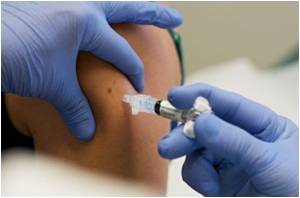A study published online today in the journal Pediatrics says that increasing the amount that physicians are reimbursed by Medicaid for administering influenza shot

"There is a strong correlation between flu vaccination and Medicaid reimbursement rates," said Byung-Kwang Yoo, M.D., Ph.D., an assistant professor in the Department of Community and Preventive Medicine at URMC and the lead author of the study. "Improving reimbursement rates could improve vaccine coverage among poor children."
The study looked at data from the National Immunization Survey (NIS) for the 2005-2006, 2006-2007, and 2007-2008 flu seasons. The survey, which is sponsored by the Centers for Disease Control and Prevention (CDC), compiles detailed information – including socio-economic data such as the family's income level, number of children, ethnicity, and mother's education level and marital status – on childhood immunization rates.
The authors looked at immunization rates for children between the ages of 6 and 23 months. The CDC first recommended that children in this age group receive the annual flu vaccine in 2004. Using the NIS data they were able to determine the vaccination rates in each state by family income level.
The income threshold for Medicaid eligibility varies by state, so the study compared rates for children at or below the federal poverty – $22,000 or less for a family of four – a population that is universally covered by state Medicaid programs. Children in families below the federal poverty level have the lowest vaccination rates.
The authors then compared the vaccination rates in each state with the amount of money physicians are reimbursed by Medicaid for administering the vaccine. In 1993, the U.S. Congress created the Vaccines for Children program which covers the actual cost of flu vaccine for Medicaid-eligible children. However, doctor's offices still incur costs for administering the vaccine (e.g. overhead, nurses and staff time, etc.)
Advertisement
"In most states the reimbursement from Medicaid is far below the actual cost," said Yoo. "The may create an obvious disincentive when physician's offices lose money every time they give a flu shot, even though vaccines are provided for free."
Advertisement
While it is clear that raising reimbursement rates come at a cost, the authors point out that there is a significant financial burden associated with the treatment of flu. Among U.S. children under the age of 5 years it is estimated that the annual cost associated with hospitalization as a result of influenza is upwards of $163 million. The annual cost burden of emergency room visits is estimated to be as high as $279 million.
"The more children with access to seasonal flu vaccinations, the lower the overall burden will be on our health care system from the costs associated with treating influenza," said URMC pediatrician Peter Szilagyi, M.D, M.P.H., a co-author of the study. "This study demonstrates that we can remove one of the barriers to higher vaccination rates among poor children by more closely aligning reimbursement with cost."
Source-Eurekalert











